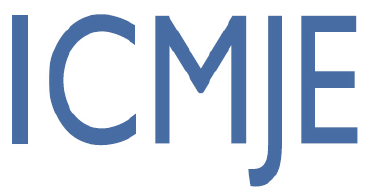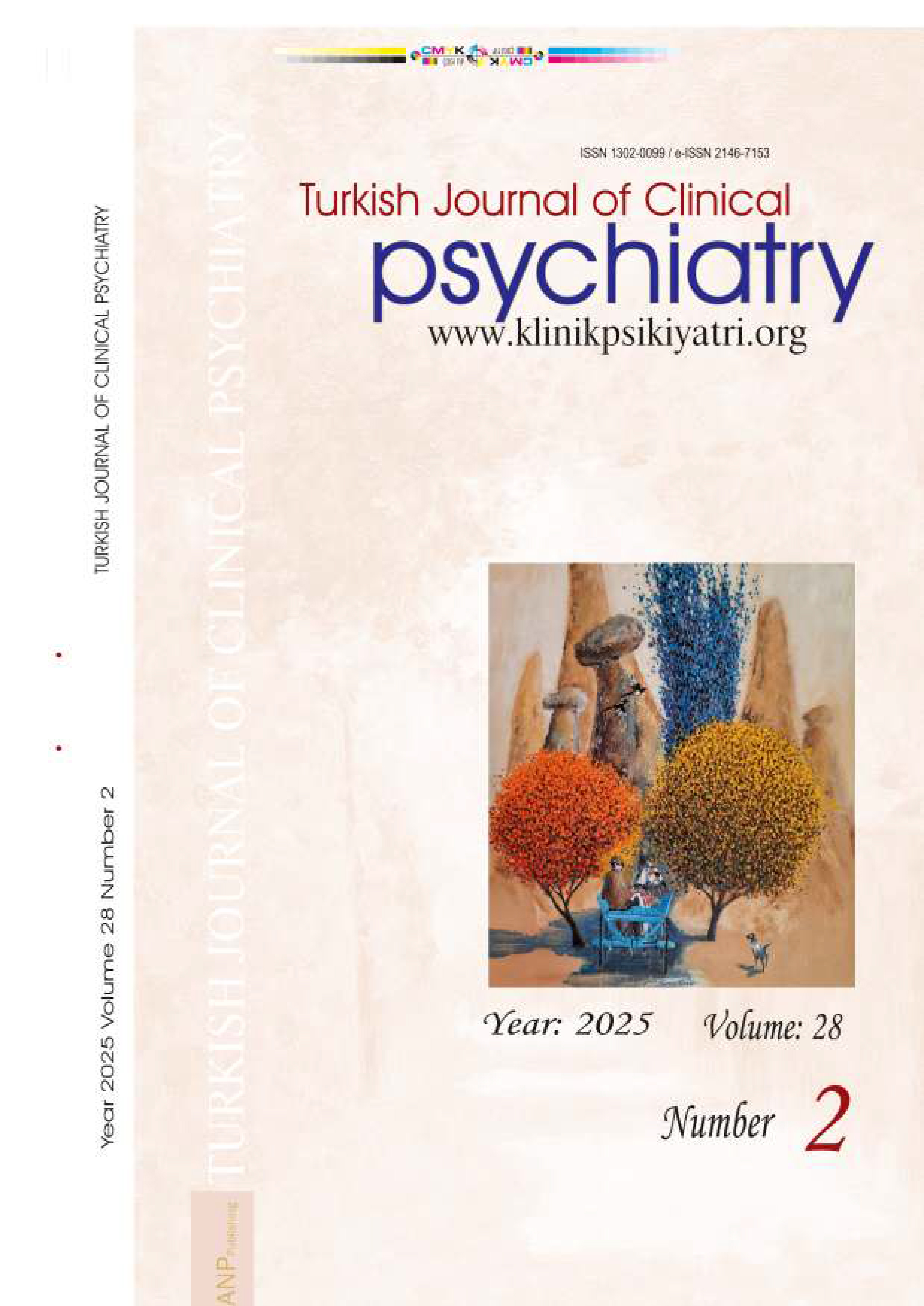





Volume: 18 Issue: 1 - 2015
| 1. | Editörden Pages 4 - 5 Abstract | |
| RESEARCH ARTICLE | |
| 2. | Clinical and Demographic Characteristics of Anxiety-Related Disorders in Children and Adolescents: An Annuel Cross-Sectional Sample Zeynep Göker, Esra Güney, Gülser Dinç, Özlem Hekim, Özden Şükran Üneri Pages 7 - 14 Objectives: Over a year period, May 2012-2013, to evaluate of anxiety disorders which diagnosed in a training and research hospital was aimed. Method: Total of 25.013 records were retrospectively reviewed and the data of cases diagnosed with any of the anxiety disorders, their clinical and sociodemographic features, was analysed by using SPSS 17.0 programme, and p<0.05 was accepted as significant. Results: At least one diagnosis of anxiety disorders was detected in 1,910 of them (7.6%). All of 51.7% of them (n=988) were girls, 50.9% of all (n=972) were adolescents (12 years and above). Not otherwise specified-anxiety disorder (NOS-AD; 36.5%, n=697), generalised anxiety disorder (GAD; 29%, n=554) and social phobic disorder (SPD; 9.7%, n=185) were frequently found types of anxiety disorders. Girls' GAD (p=0.014) and SPD (p=0.027) distribution; boys' separation anxiety disorder (SAD; p=0.045) and specific phobia (SP; p=0.009) distribution; adolescents' GAD (p<0,001) and SPD (p<0,001), obsessive-compulsive disorder (OCD; p<0,001) and panic disorder (PD; p<0,001); children's NOS-AD (p<0,001), SAD (p<0,001) and SP (p=0.009) distributions were found as significant. 62.9% of cases (n=1202) were treated by selective serotonin re-uptake inhibitors (SSRI; and being adolescent, the presence of NOS-AD, OCD and GAD has been found as predictors of giving pharmacotherapy (for all four variables p<0,001). Conclusion: Childhood anxiety disorders have similar effects on both girls and boys. SSRI medication was the very first choice for treating of anxiety disorders in our clinic. |
| 3. | Secondary Traumatic Stress in Mental Health Workers in Turkey Ayten Zara, Ferhat Jak İçöz Pages 15 - 23 Objectives: This research investigated the secondary traumatic stress amongst mental health workers in Turkey in relation to professional, demographic factors and personal traumatic history. Method: 205 mental health workers from different professional background such as psychologist, psychiatrist, counseling psychologist, social worker and volunteers participated in this study. The research data was collected from professionals working in the East, Southeast and West Region of Turkey by using the demographic information form, and the Trauma Attachment Belief Scale. Results: This research has found a high level of secondary traumatic stress in mental health workers. Mental health workers with personal trauma history and who work in East and South-East Region of Turkey reported more secondary traumatic stress. Conclusion: Specializing in working with traumatic stress field and receiving supervision were found to have a preventive effect against the secondary traumatic stress. The findings of this research is important with regards to facilitating work with traumatized people and preventing mental health workers getting stress. |
| 4. | The Assesment of Psychiatric Consultations in a University Hospital Betül Uyar, Faruk Gürgen Pages 24 - 28 Objectives: The objective of this study was to evaluate the causes of psychiatric consultations requested from different departments, sociodemographic characteristics of the patients and physical-psychiatric diagnosis and management of the patients. Method: We prospectively included 244 patients older than 18 years old who were referred to psychiatric consultation in Dicle University Hospital between 01/03/2013-31/06/2013. Collected data and diagnostic evaluations, which were made according to DSM-IV-TR criteria, were recorded on the consultation form and then transferred to a structured form. Results: Among the 244 patients (mean age: 46 ±19) referred for psychiatric consultation, 58.6% (n=143) of the patients were female and 41.4% (n=101) were male. Psychiatric consultations were most frequently requested from Internal Medicine 45.5% (n=111), Chest Diseases 10.7% (n=26), and Physical and Rehabilitation 8.6% (n=21) clinics. The most frequent causes of psychiatric consultations were depressive symptoms 24.6% (n=60), anxiety 18.4% (n=45), and suicide attempts 18% (n=60). After evaluation of the patients according to DSM-IV-TR criteria, the patients were most frequently diagnosed as adjustment disorder 28.7% (n=70), depression 26.6% (n=65) and anxiety disorder 19.3% (n=47). 9.8% (n=24) of the cases had not received any psychiatric diagnosis. Conclusion: Adherence to the treatment and prognosis of the illnesses of the patients, which are treated in non-psychiatric clinics, can be improved by the harmonious interaction between psychiatry clinic and other medical clinics. In order to give a better service for the hospitalized patients having psychiatric symptoms, Consultation-Liaison Psychiatry Unit should be established in hospitals. |
| CASE REPORT | |
| 5. | Self Enucleation in Psychosis: Two Case Reports Leman İnanç, Merih Altıntaş, Çiğdem Hazal Bezgin, Sermin Kesebir Pages 29 - 34 Self mutilation is defined as the injuring of body mostly without intending to commit suicide. Oedipism is a termused to describe self inflicted enucleation. Self enucleation of eyes is an extreme and rare form of self injury. Ocular form of major self mutilation is mostly seen in schizophrenia and psychosis. Management of self mutilation of the patient requires cooperation between psychiatrists and other medical specialists. Two case reports are presented in this article. |










